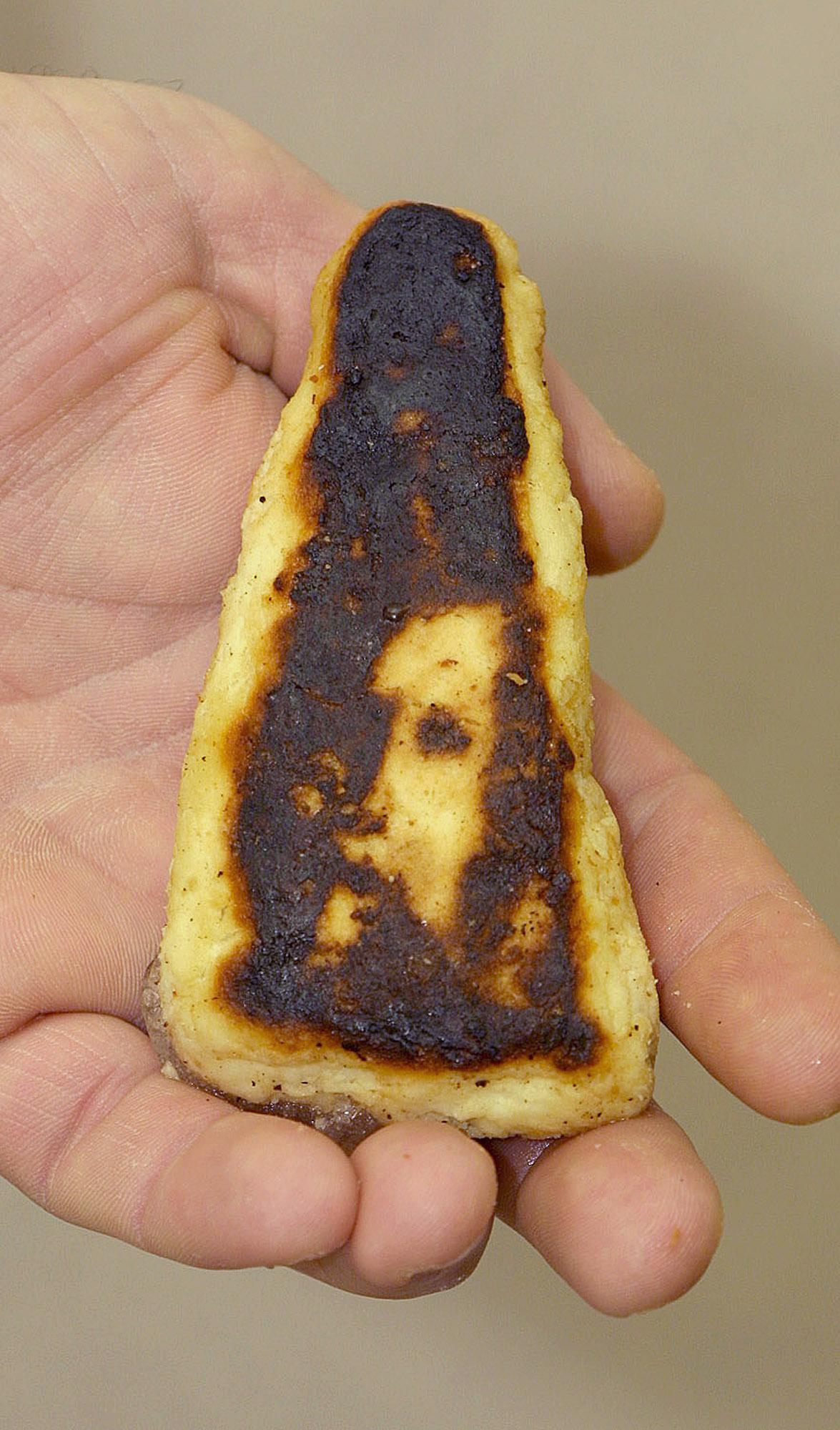
Every now and then, there’s a viral news article about someone claiming to see religious imagery on a Goldfish cracker, a power meter, a turtle shell, or–more commonly–a piece of toast.
According to a new study published in the journal Cortex, that’s “perfectly normal” because of a phenomenon called “face pareidolia, the illusory perception of non-existent faces” caused by the interaction between the frontal cortex, the part of the brain that helps produce “expectations” of what an object should look like, and the posterior visual cortex, the part that processes the image.
Researchers at the University of Toronto — in partnership with Chinese universities — performed brain scans on 20 participants and showed them computer-generated pictures made up of indiscernible shapes. Some were told in advance that they were going to see images of a face, while others were told they would see a letter of the English alphabet. In both instances, about 35% saw an illusory image where there wasn’t one.
“Our findings suggest that it’s common for people to see non-existent features because human brains are uniquely wired to recognize faces, so that even when there’s only a slight suggestion of facial features the brain automatically interprets it as a face,” the study’s lead researcher Kang Lee of the University of Toronto’s Eric Jackman Institute of Child Study said in a statement.
The CBC reports that Lee also said people who see Jesus or the Virgin Mary in food or other objects may see them because religious beliefs can dramatically impact how they want to see the way life works.
New York University researchers Ana Gantman and Jay Van Bavel recently discussed similar findings (available online) in an April New York Times editorial. In a few experiments, they “flashed strings of letters” across a computer screen and asked participants whether they could see a word. Some of the words shown contained “moral content (virtue,steal, God) and others did not (virtual, steel, pet).”
They “found that participants correctly identified strings of letters as words more often when they formed moral words (69 percent accuracy) than when they formed nonmoral words (65 percent accuracy),” and have dubbed this phenomenon the “moral pop-out effect” — comparing it to the experience of food seeming especially pronounced to people who are hungry.
More Must-Reads from TIME
- Why Trump’s Message Worked on Latino Men
- What Trump’s Win Could Mean for Housing
- The 100 Must-Read Books of 2024
- Sleep Doctors Share the 1 Tip That’s Changed Their Lives
- Column: Let’s Bring Back Romance
- What It’s Like to Have Long COVID As a Kid
- FX’s Say Nothing Is the Must-Watch Political Thriller of 2024
- Merle Bombardieri Is Helping People Make the Baby Decision
Write to Olivia B. Waxman at olivia.waxman@time.com